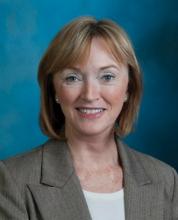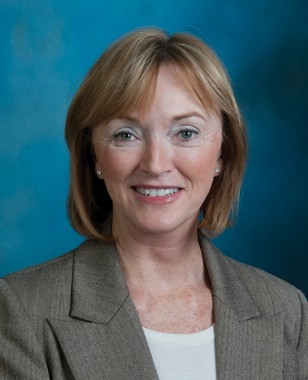User login
Federally qualified health centers could get as much as a 32% bump in their Medicare payments under a new payment system to be phased in next year.
On April 29, the Centers for Medicare & Medicaid Services (CMS) released a final rule creating a new payment system for health centers that provide primary care services in medically underserved areas.
Federally qualified health centers (FQHCs) are currently paid a per-visit payment by Medicare based on their average "reasonable costs," with payments capped for certain services. But under the Affordable Care Act, Congress directed the CMS to develop a prospective payment system for FQHCs that accounts for the type, intensity, and duration of services.
The new payment system, which officially takes effect on Oct. 1, would pay FQHCs a single encounter-based rate per patient per day for most services. Rather than rely on the FQHC’s own average costs, the new system bases the bundled rate on the average costs of all FQHCs. The rate is adjusted for geographic cost variation. It also provides a 34% higher payment for visits with new patients, as well as for initial preventive physical exams and annual wellness visits with Medicare beneficiaries.
Certain exemptions are allowed: FQHCs can bill separately for mental health services provided on the same day as a medical visit. They can also bill separately if an illness or injury occurs on the same day that another visit has already occurred.
CMS estimates that moving to the new system would increase Medicare payments to FQHCs by about 32%.
"The new payment system helps increase the ability and capacity of federally qualified health centers to provide essential and affordable services for even more patients who need care," CMS Administrator Marilyn Tavenner said in a statement. "These FQHCs are essential to countless patients in local communities who depend on them for getting their primary and preventive care."
The National Association of Community Health Centers praised the new rule. In a statement, Dan Hawkins, the group’s senior vice president of policy, said the new payment system has the potential to provide "much needed relief" to health centers, which typically lose money when seeing Medicare beneficiaries.
The final rule will be published in the Federal Register on May 2. The CMS is still seeking comments on how to calculate coinsurance when preventive and nonpreventive services are billed on the same claim, the proposed "G codes," and how to adapt chronic care management policies under the new payment system.
The agency will accept comments at regulations.gov until July 1.
On Twitter @maryellenny
Federally qualified health centers could get as much as a 32% bump in their Medicare payments under a new payment system to be phased in next year.
On April 29, the Centers for Medicare & Medicaid Services (CMS) released a final rule creating a new payment system for health centers that provide primary care services in medically underserved areas.
Federally qualified health centers (FQHCs) are currently paid a per-visit payment by Medicare based on their average "reasonable costs," with payments capped for certain services. But under the Affordable Care Act, Congress directed the CMS to develop a prospective payment system for FQHCs that accounts for the type, intensity, and duration of services.
The new payment system, which officially takes effect on Oct. 1, would pay FQHCs a single encounter-based rate per patient per day for most services. Rather than rely on the FQHC’s own average costs, the new system bases the bundled rate on the average costs of all FQHCs. The rate is adjusted for geographic cost variation. It also provides a 34% higher payment for visits with new patients, as well as for initial preventive physical exams and annual wellness visits with Medicare beneficiaries.
Certain exemptions are allowed: FQHCs can bill separately for mental health services provided on the same day as a medical visit. They can also bill separately if an illness or injury occurs on the same day that another visit has already occurred.
CMS estimates that moving to the new system would increase Medicare payments to FQHCs by about 32%.
"The new payment system helps increase the ability and capacity of federally qualified health centers to provide essential and affordable services for even more patients who need care," CMS Administrator Marilyn Tavenner said in a statement. "These FQHCs are essential to countless patients in local communities who depend on them for getting their primary and preventive care."
The National Association of Community Health Centers praised the new rule. In a statement, Dan Hawkins, the group’s senior vice president of policy, said the new payment system has the potential to provide "much needed relief" to health centers, which typically lose money when seeing Medicare beneficiaries.
The final rule will be published in the Federal Register on May 2. The CMS is still seeking comments on how to calculate coinsurance when preventive and nonpreventive services are billed on the same claim, the proposed "G codes," and how to adapt chronic care management policies under the new payment system.
The agency will accept comments at regulations.gov until July 1.
On Twitter @maryellenny
Federally qualified health centers could get as much as a 32% bump in their Medicare payments under a new payment system to be phased in next year.
On April 29, the Centers for Medicare & Medicaid Services (CMS) released a final rule creating a new payment system for health centers that provide primary care services in medically underserved areas.
Federally qualified health centers (FQHCs) are currently paid a per-visit payment by Medicare based on their average "reasonable costs," with payments capped for certain services. But under the Affordable Care Act, Congress directed the CMS to develop a prospective payment system for FQHCs that accounts for the type, intensity, and duration of services.
The new payment system, which officially takes effect on Oct. 1, would pay FQHCs a single encounter-based rate per patient per day for most services. Rather than rely on the FQHC’s own average costs, the new system bases the bundled rate on the average costs of all FQHCs. The rate is adjusted for geographic cost variation. It also provides a 34% higher payment for visits with new patients, as well as for initial preventive physical exams and annual wellness visits with Medicare beneficiaries.
Certain exemptions are allowed: FQHCs can bill separately for mental health services provided on the same day as a medical visit. They can also bill separately if an illness or injury occurs on the same day that another visit has already occurred.
CMS estimates that moving to the new system would increase Medicare payments to FQHCs by about 32%.
"The new payment system helps increase the ability and capacity of federally qualified health centers to provide essential and affordable services for even more patients who need care," CMS Administrator Marilyn Tavenner said in a statement. "These FQHCs are essential to countless patients in local communities who depend on them for getting their primary and preventive care."
The National Association of Community Health Centers praised the new rule. In a statement, Dan Hawkins, the group’s senior vice president of policy, said the new payment system has the potential to provide "much needed relief" to health centers, which typically lose money when seeing Medicare beneficiaries.
The final rule will be published in the Federal Register on May 2. The CMS is still seeking comments on how to calculate coinsurance when preventive and nonpreventive services are billed on the same claim, the proposed "G codes," and how to adapt chronic care management policies under the new payment system.
The agency will accept comments at regulations.gov until July 1.
On Twitter @maryellenny

